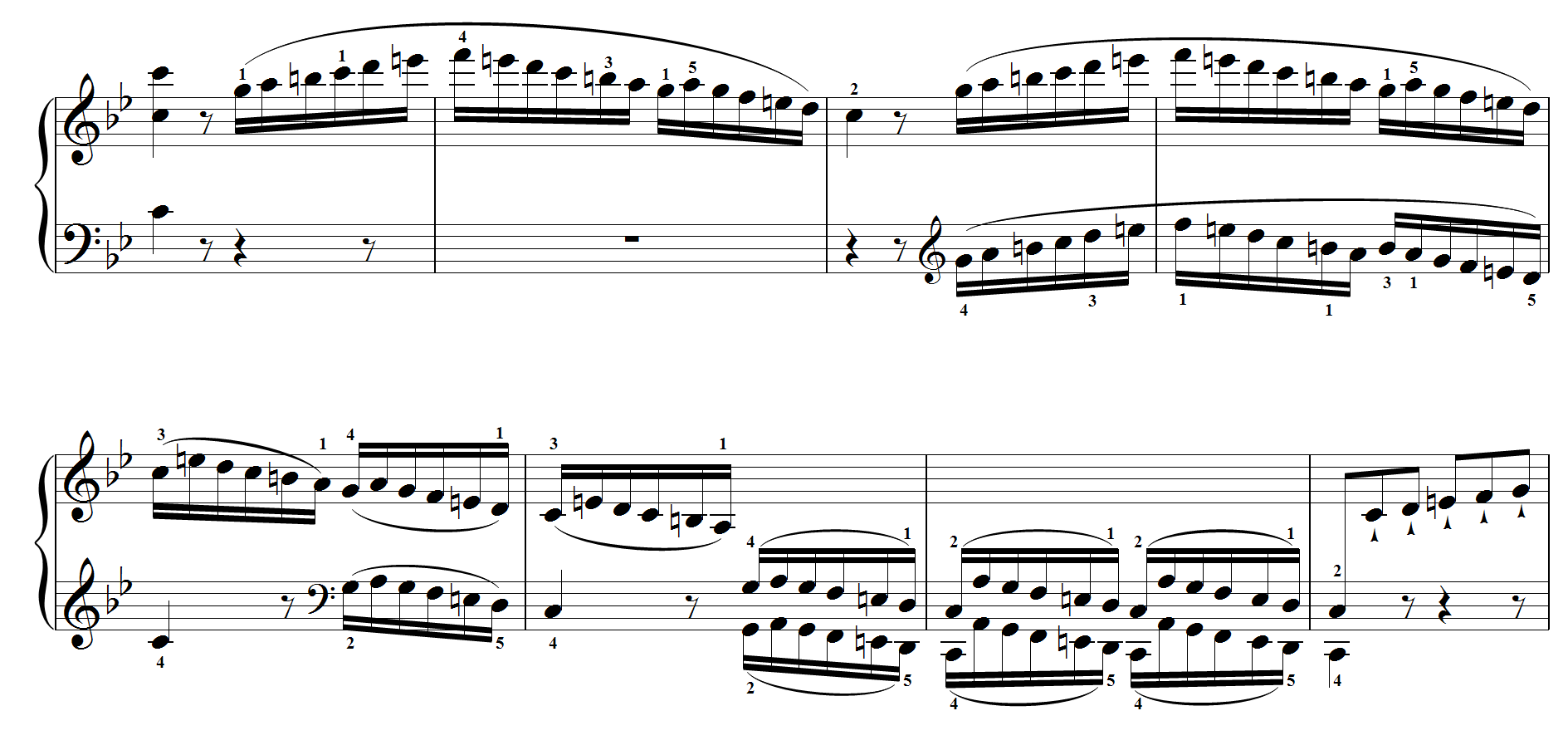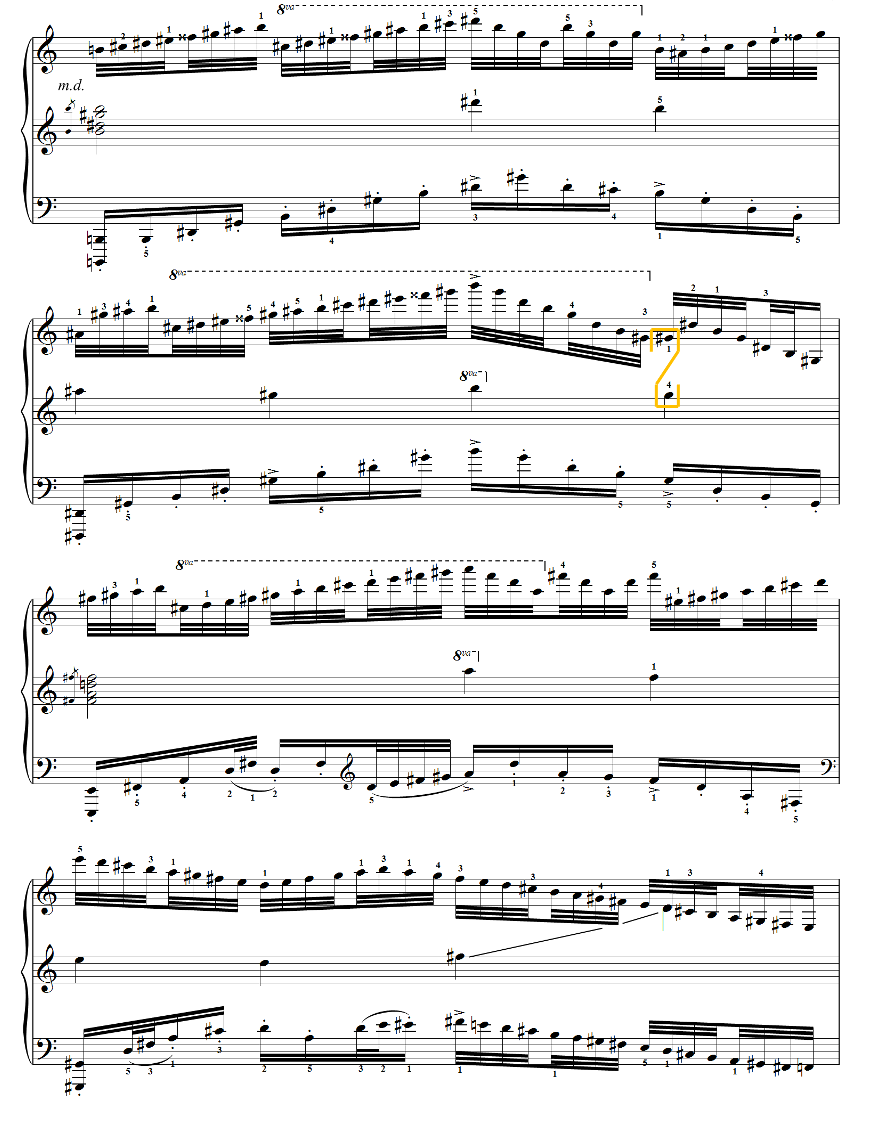Submitted by Josh Condon
Published on 4/29/2020

Submitted by Josh Condon
Published on 4/29/2020

“This unorthodox fingering is no more difficult to master than more traditional fingerings, but it also has the advantage of making Beethoven's original articulations come out clearly and effortlessly.”
Submitted by Noah Sonderling with thanks to Elisabeth Wright
Published on 10/4/2020

Submitted by Osip Nikiforov
Published on 3/15/2020

Submitted by Osip Nikiforov
Published on 3/15/2020

Submitted by Noah Sonderling
Published on 10/4/2020

Submitted by Chelsea de Souza
Published on 4/11/2020

“Splitting the octaves between the hands improves legato. Some of the sixteenth-note figures are very awkward, so taking the occasional note in the left hand helps. Grabbing the last three notes before the right-hand leaps facilitates a secure shift.”
Submitted by Michael Clark
Published on 1/1/2020

“I like the legato I can produce with this fingering.”
Submitted by Michael Clark
Published on 1/1/2020

“I like to divide the work more evenly between the hands.”
Submitted by Michael Clark
Published on 1/1/2020

“Taking the first sixteenth note of each group in the left hand results in a more brilliant and secure performance.”
Submitted by Michael Clark with thanks to Mia Hynes
Published on 1/1/2020

“I appreciate the added security this fingering brings to the leap.”
Submitted by Michael Clark
Published on 1/1/2020

“This fingering improves legato by eliminating a leap to the sixth.”
Submitted by Michael Clark
Published on 1/1/2020

“Taking the G in the right hand allows the left hand to stay in one position for the octave.”
Submitted by Michael Clark
Published on 1/1/2020

“Playing the sixteenth notes that occur on the quarter beats with the right hand thumb helps to voice the "hidden" line in this compound melody. This redistribution is also designed to allow the right hand to remain in a relatively relaxed position when playing this passage at the indicated "Allegro" tempo. The performer should be careful to avoid emphasizing the left hand thumb in the same manner as the right hand or holding the thumb notes in either hand longer than the duration of a sixteenth note.”
Submitted by Jonathan Scofield
Published on 4/29/2020

“These simple left hand redistributions take the pressure off the right hand slightly.”
Submitted by Michael Lenahan
Published on 5/25/2020

“The redistribution at the end of the 2nd measure is a lifesaver! Take the G-sharp in the top staff with the left hand as an octave, so the right just plays a repeated G-sharp with 3 and 4.”
Submitted by Michael Lenahan
Published on 5/25/2020

“The double 4s and double 5 in the LH should be played with a high wrist on the downbeat. Taking the C's with a right hand octave helps a lot.”
Submitted by Michael Lenahan
Published on 5/25/2020